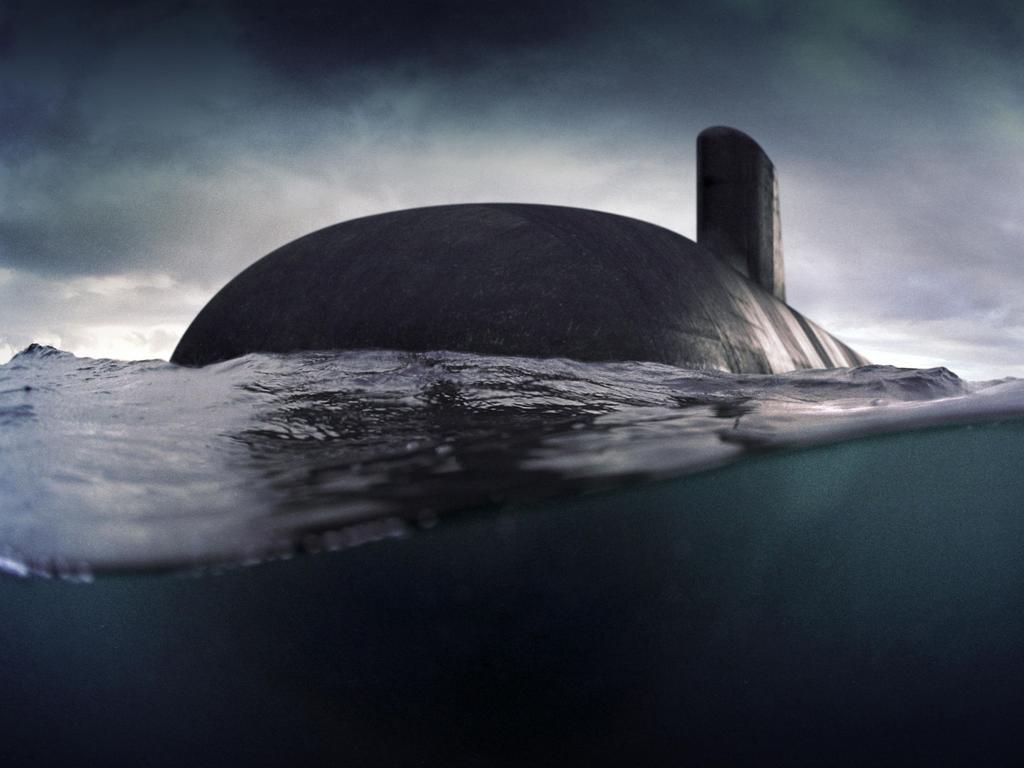
Each have made blatantly conflicting statements to parliament about the cost of Australia’s submarine contract with the French. Only one can be right.
But in some ways Labor, in moving to try to make a senior minister admit to misleading the parliament, is picking “low-hanging fruit”, or merely a surface manifestation of what really happened in the submarine contract disaster.
The ALP now recognises that after the position of treasurer, defence is set to become Australia’s most important ministry in coming years. That’s why Richard Marles, as deputy leader, retained the defence shadow portfolio. And because much of the defence action is currently in the Senate he works closely with Labor’s leader in the Senate, Penny Wong.
Already, as I describe below, startling revelations are emerging in parliamentary committees as to what really happened in the contract negotiating mess which contributed to the conflicting statements.
The differences between the two ministers’ statements could not be more stark.
When she was defence minister Marise Payne declared in a white paper that the submarine contract would cost $50 billion, calculated by adjusting for future inflation or on a so-called “out turn price basis”.
She was backed by the former defence secretary Dennis Richardson, who earlier made a similar statement. After adjusting for infrastructure the Payne statement showed that the French must have bid in 2016 dollars between $20bn and $25bn —probably at the lower end of the range.
In an answer to a Dorothy Dix question the current defence minister, Senator Reynolds, declared that the $50bn cost announced in 2016 was not, as Payne stated in the white paper, “out turn” dollars but rather in 2016 dollars of the day. In other words double the Payne price.
All the ministerial statements at the time of the contract announcement confirmed the Payne statement. In Reynolds’ corner is the current person in charge of the submarine project, Rear Admiral Greg Sammut, who last year made a similar statement to Reynolds.

For what it is worth I believe Payne was right and that Reynolds made a mistake. The French tender was actually between $20bn and $25bn in 2016 dollars and not $50bn, as Reynolds stated.
But I am merely a commentator. It’s up to the parliament to adjudicate the issue.
But in fact the difference between the two ministerial statements is less important than what really happened in those dark days after the announcement, when the contract was being consummated.
To help the defence department a naval board was set up consisting of some of the best US and Australian defence equipment experts.
Australia has now received its first inkling of how we were trapped as a result of the cross questioning in Senate estimates of a member of the Naval Shipbuilding Advisory Board, Ron Finlay, by Penny Wong. Finlay is one of Australia’s most experienced infrastructure lawyers.
FINLAY: “In my experience of many decades of negotiating major contracts, if you do not have an alternative of either going to bidder B or cancelling the project, yes, you are captured in a negotiation with few options. That does increase the number of issues that can become a block to concluding the negotiations”.
WONG: Were we captured?
FINLAY : “Sorry?”
WONG: “Were we captured?”
FINLAY : “Well, we had down selected to one. That was a matter of government policy before my time. Or before the board’s time.”
Finlay should have gone further. In my view the truth is we were well and truly captured. In 2015-16 the French sent to Australia a magnificent team of negotiators who painted a fantastic picture of Australian content and submarine research collaboration. We could have a vessel akin to a nuclear submarine using conventional batteries. We fell in love with the French and cancelled all other options.
The French do not take prisoners and once they had no rivals they removed all those who had done the deal and replaced them with people with totally different aims.

As the dangers unfolded the Naval Board recommended that Defence examine alternatives should negotiations not succeed.. And they went further, saying that if a deal could not be done “Defence consider if proceeding is in the national interest”
Sadly the Naval Board did not press hard enough.
Finlay says the advisory board “does not recall being advised of the extent of Defence’s outreach to alternative submarine vendors in 2018 to ascertain and make an up-to-date appraisal of each alternative vendor’s capacity to provide an alternative option’’.
Finlay admits the Defence assessment process was an internal Defence “tabletop” exercise.
And the advisory board “did not express any concerns about the thoroughness of the process”.
The simple conclusion is that although Defence was required to look at alternative vendors, they did so through their own internal process They did not established terms of reference for the review; they did not engage foreign representatives and no formal advice was put together or prepared for the responsible minister.
The Payne-Reynolds mess is just the start of the repercussions of those failures.
And remember this is Australia’s largest and most important defence contract, at a time when our region is now far more dangerous.








Next month the ALP will have the opportunity to force either Foreign Minister Senator Marise Payne or Defence Minister Senator Linda Reynolds into admitting they misled the parliament of Australia.